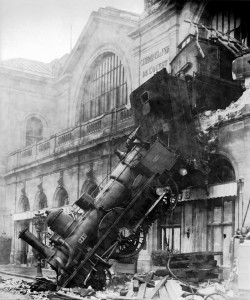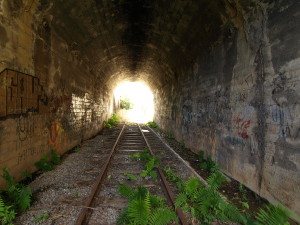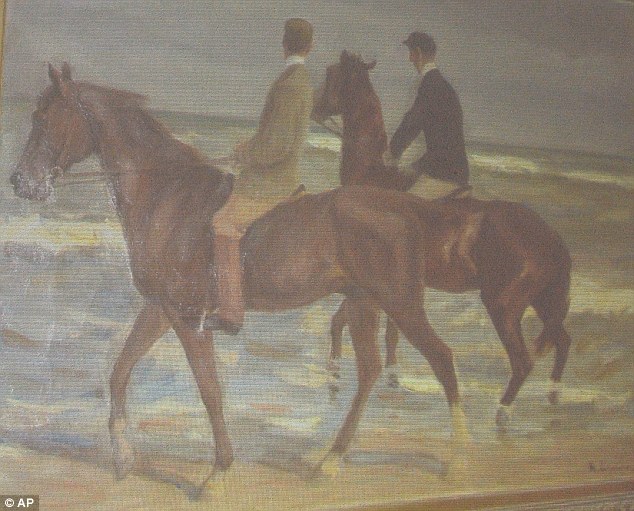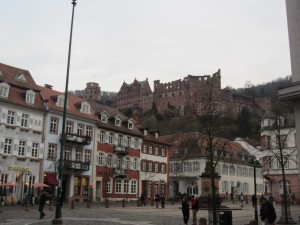Back in September, we voiced curious skepticism about breathless reports of a buried train near Wrocław, formerly Breslau, in Poland. Rumors of this “Nazi gold train” supposedly concealed at the end of World War II and filled with either gold, art, or both, had an odd mixture of plausibility and absurdity. Yet Polish officials went on record confirming…something. On August 28, 2015, Deputy Culture Minister Piotr Zuchowski stated at a press conference that he is “99 percent sure” that the government had located the train allegedly loaded with gold, gems, and perhaps artwork that was buried as the Soviet Red Army encircled Breslau in the last months of World War II. “The train is 100 meters long and is protected,” Zuchowski said.
Topics: Soviet, Breslau, Wrocław, Piotr Koper, Red Army, Nazi Gold Train, Walbrzych, Deputy Culture Minister Piotr Zuchowski, World War II, Poland, Washington Post, Janusz Madej, Andreas Richter, New York Times
What to Make of Nazi “Gold Train” Supposedly Buried in Poland
I mostly ignored the initial twitterings about a supposedly secret train laden with gold and other Nazi-looted treasures that was buried somewhere near Wrocław, formerly Breslau, in Poland. My reasons were straightforward: just like supposed sightings of the Gardner Museum heist art, or the Amber Room, the story had all the hallmarks of a fable being peddled by someone who, perhaps not coincidentally, was suggesting that they be paid something for their trouble. Whether this is the next Gurlitt saga or just Al Capone’s vault, it’s too early to tell.
Topics: the Holy Roman Empire, Al Capone’s vault, Soviet, Gauleiter Karl Hanke, Königsberg, Cornelius Gurlitt, Breslau, Wrocław, Prussia, Max Liebermann, East Prussia, Red Army, Nazi Gold Train, Amber Room, Bernsteinzimmer, the Hanseatic League, Walbrzych, Restitution, Deputy Culture Minister Piotr Zuchowski, World War II, Markus Stötzel, Poland, the Duchy of Silesia, Bohemia, Riders on the Beach, David Friedmann, the Kingdom of Poland, Gardner Museum heist, the German Empire
First Painting Restituted from Gurlitt Trove to be Sold; Appellate Court in Munich Breathes New Life Into Will Contest
After the restitution of the first two works of Nazi-looted art from the trove of works found in the apartment of Cornelius Gurlitt, David Toren has announced his intention to auction his work, Two Riders on the Beach by Max Liebermann. Toren, now more than 90 years old, remembers the theft of the painting from his uncle David Friedmann in Breslau (now Wrocław). Toren is the only claimant to date to have filed litigation over the Gurlitt case. Sotheby’s will auction the work on June 24. Toren explained his motivation for the sale as follows:
Topics: Petra Willner, Cornelius Gurlitt, Breslau, Wrocław, Zwei Reiter am Strand, Uta Werner, Max Liebermann, Gurlitt Collection, Two Riders on the Beach, Verena Osgyan, Oberlandesgericht, Gurlitt, Restitution, David Toren, World War II, Mittelbayerische Zeitung, Kunstmuseum Bern, Museums, Berner Zeitung, David Friedmann
Gurlitt Task Force Issues Second Public Recommendation, Urges Restitution of Liebermann painting to David Toren—Lawsuit Not Over Yet
Eileen Kinsella at ArtNet news reported today that the Gurlitt Taskforce has recommended the restitution of the Max Liebermann painting Riders on the Beach (Reiter am Strand) to David Toren, a New York man who left Germany at age 14 in 1939. His great uncle David Friedmann lived in Breslau, the capital of Silesia (now part of Poland, known as Wrocław). The Nazis catalogued and seized Friedmann’s art collection in 1939-40, and the Liebermann painting appears on those records. It was later found among those 1,280 objects seized from Gurlitt a little over two years ago when he aroused suspicion returning from Switzerland with a large amount of cash.
Topics: Breslau, Eileen Kinsella, Wrocław, Gurlitt Task Force, Max Liebermann, Silesia, Nazi-looted art, Gurlitt Collection, Entartete Kunst, Reiter am Strand, August Matteis, Restitution, David Toren, 28 U.S.C. § 1605(a)(2), World War II, Switzerland, degenerate art, Poland, Altmann v. Republic of Austria, Kunstmuseum Bern, www.lostart.de, Berner Zeitung, Riders on the Beach, David Friedmann, ArtNet news
Recap of Ersessene Kunst—Der Fall Gurlitt (Appropriated Art—The Gurlitt Case): January 26, 2014 in Heidelberg
I’ve just returned from my presentation in Heidelberg at the Hochschule für Jüdische Studien in Heidelberg at the conference Ersessene Kunst—Der Fall Gurlitt; Appropriated Art—The Gurlitt Case. The presentations were, without exception, outstanding. They ranged from rarely-told case stories, to sharp insights of some of the overarching principles that guide the the Gurlitt case and similar events. As the discussions made clear, this case will not be easily resolved. That in turn makes recent reports that Cornelius Gurlitt has indicated a willingess to discuss the art's return all the more significant.
Topics: Maria Altmann, Leopold Reidemester, Ministerin für Justiz und Kultur, Stuttgart, Das Alte Schauspielhaus, Cologne, Irina Alter, Portrait of Adele Bloch-Bauer, veschollene Kunst, Focus, Schwabinger Kunstfund, Aschbach Castle, Mussolini, Wiedergutmachung, Annette Weber, Monte Cassino, Cornelius Gurlitt, Corinna Budras, S. Lane Faison, Breslau, Universität Heidelberg, Augsburg, Aryanization, Anat Feinberg, Willi Korte, Schwabinger Kunstfund. Kunstfund München, Monuments Man, Jud Süss, Wrocław, Dresden, Gurlitt Task Force, Germany, Silesia, Fall Gurlitt, Wallraf-Richartz Museum, Köln, Nazi-looted art, Henry Keazor, Gurlitt Collection, Appropriated Art the Gurlitt Case, Schloss Aschbach, Die Welt, Kurpfälzische Museum Heidelberg, Hochschule für Judische Studien Heidelberg, Karl Haberstock, Eberhard Karls-Universität Tübingen, Emily Löffler, CSU, Williams College, Hildebrand Gurlit, Entartete Kunst, Universität Zürich, Arisierung, Lehrstuhl für Römisches Recht und Privatrecht, Württemberg, Schlesien, Nürnberger Institut, Hamburg, Otto Förster, Rückgabe, Beutekunst, 'Stürmer-Bibliothek', Magdeburg, Portrait of Amalie Zuckerkandl, Ersessene Kunst, Katja Terlau, Art Loss Recovery Unit, Jim Tobias, Hermitage, Gurlitt, Bavaria, Johannes Heil, Wien, Sullivan & Worcester LLP, Lucas Elmenhorst, Events, Kunsthistorisches Institut, Nürnberg, Jüdisches Museum Frankfurt, Looted Art, „Sturmer-Library“, degenerate art, Seminar für Neuere Geschichte, Wolfgang Ernst, Justizminister, Göring, www.lostart.de, Nazi art, Raubkunst, Nicholas M. O'Donnell, Frieder Hepp, Verjährung, Vienna, Claudius Krausharr, Münchner Kunstfund, Zwickau, Kajetan Mühlmann, New York, Werner Haftmann, FAZ Frankfurt, Felicitas Heiman-Jellinek






